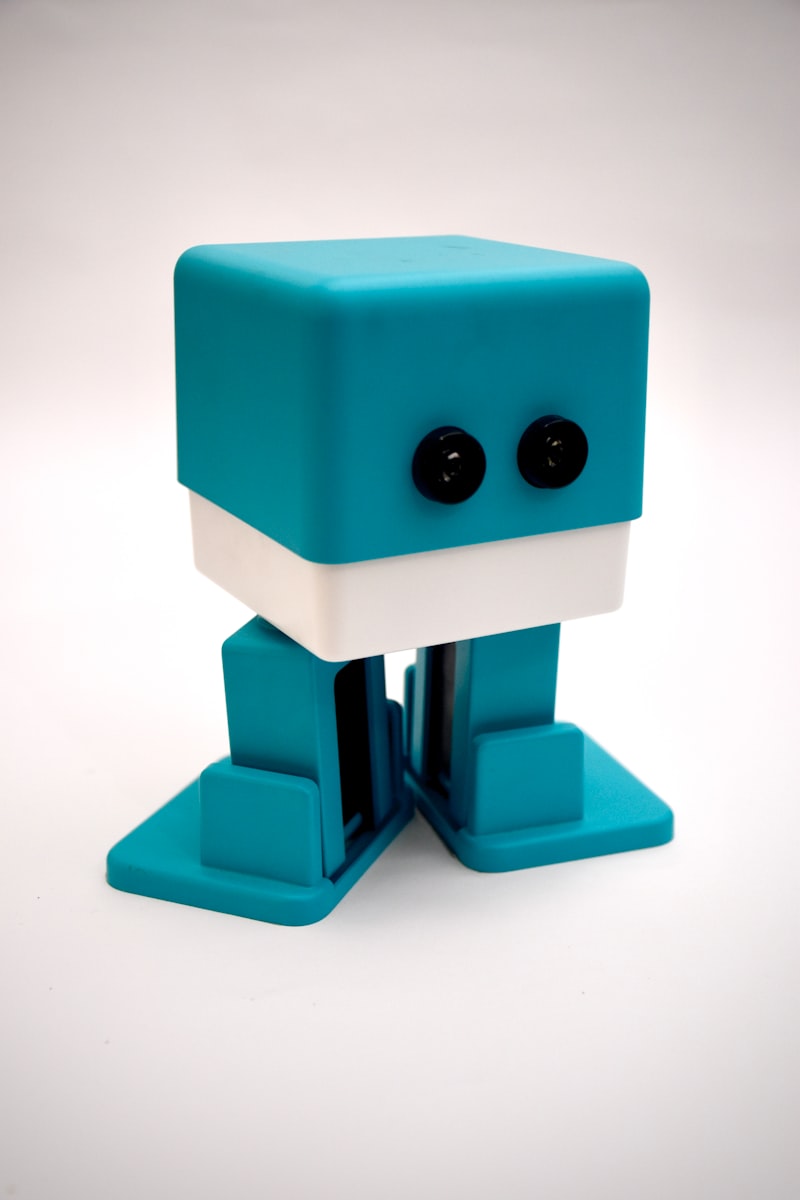"Chatbots are like the Swiss Army knives of SaaS marketing, offering versatility and efficiency in customer engagement, support, and lead generation."
You're looking to sign up for a new software service, and you have a question. You click on the website's chat bubble, type in your query, and within seconds, you have a helpful response. No waiting for an email reply or being put on hold for a call. That's the power of chatbots, and if you're a SaaS marketer, they're a game-changer.
As a SaaS marketer, staying ahead of the curve is crucial. In this guide, we'll explore the wonderful world of chatbot marketing, and how you can harness the power of conversational AI to drive engagement and support for your SaaS product. Let's dive in!
1. The Rise of Chatbots and Conversational AI
Chatbots have come a long way since the days of "SmarterChild" on AOL Instant Messenger. Today, chatbots are powered by advanced AI algorithms and natural language processing (NLP) capabilities. They can not only understand and respond to user queries, but they can also learn from interactions, making them increasingly smarter and more efficient.
According to a Gartner report, by 2022, more than 70% of customer interactions with businesses will involve chatbots or other AI technologies. This trend, driven by the need for efficient customer service, personalized experiences, and 24/7 availability, has made chatbots an indispensable tool for modern marketers.
2. Why Chatbots Matter for SaaS Marketers
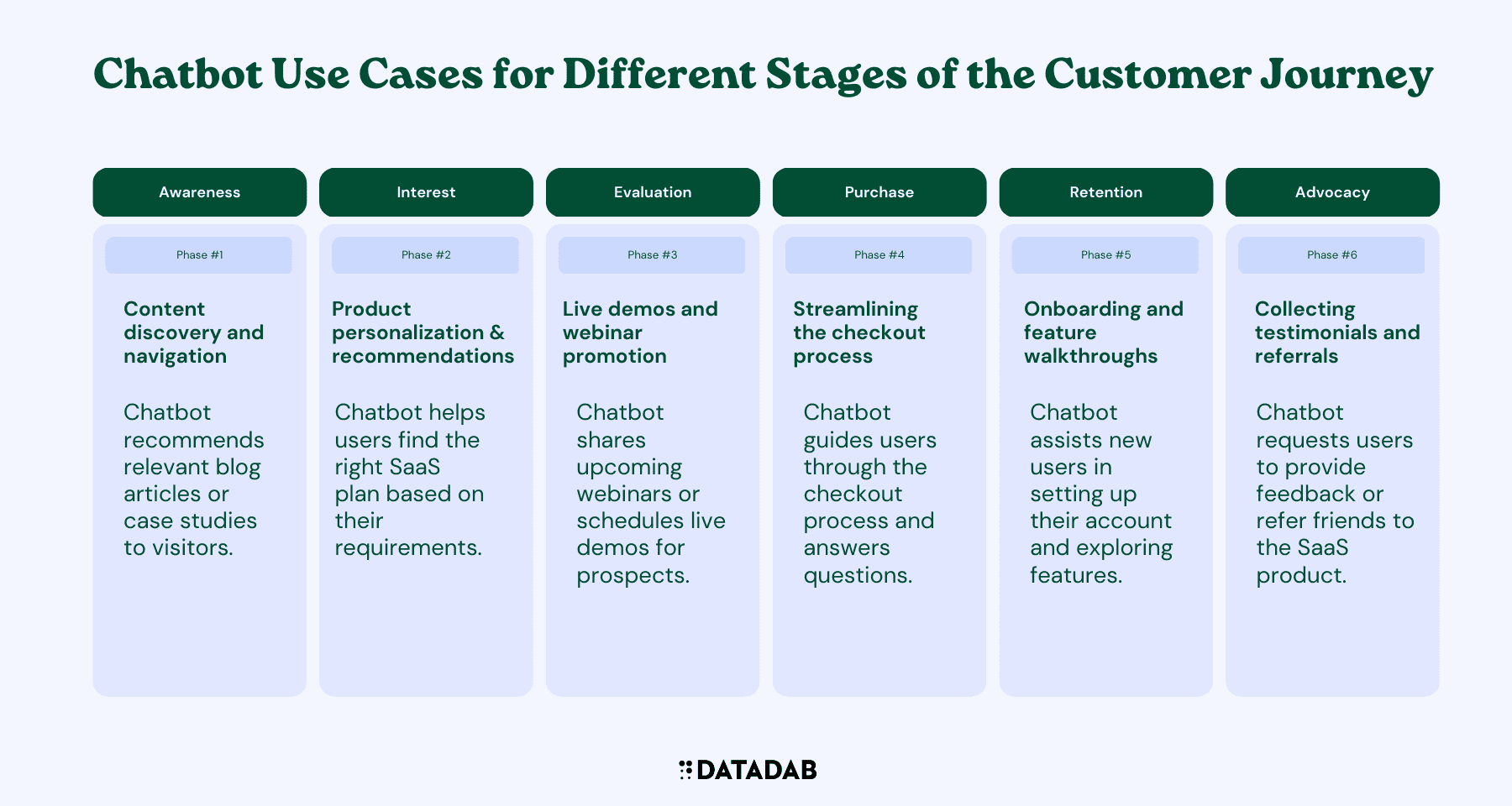
As a SaaS marketer, you might be wondering why chatbots are worth your time and investment. Here are a few reasons why:
2.1. 24/7 Customer Support
Providing exceptional customer support is critical to SaaS success. Chatbots allow you to offer around-the-clock assistance without the need for human agents to be available 24/7. With chatbots, you can provide instant help to users, whether they're inquiring about your product or need technical assistance.
2.2. Personalized Experiences
Personalization is a key factor in creating meaningful customer experiences. Chatbots can use data from user interactions to tailor responses and offer personalized solutions to user problems. This level of personalization can lead to higher customer satisfaction and increased brand loyalty.
2.3. Scalability
As your SaaS business grows, so does the volume of customer inquiries. Chatbots provide a scalable solution to handle the increased demand without compromising on response time or quality.
2.4. Data-Driven Insights
Chatbots collect valuable data from customer interactions, providing insights that can help optimize your marketing efforts. You can analyze chatbot data to identify common user concerns, trends, and preferences, which can inform your marketing strategies and product development.
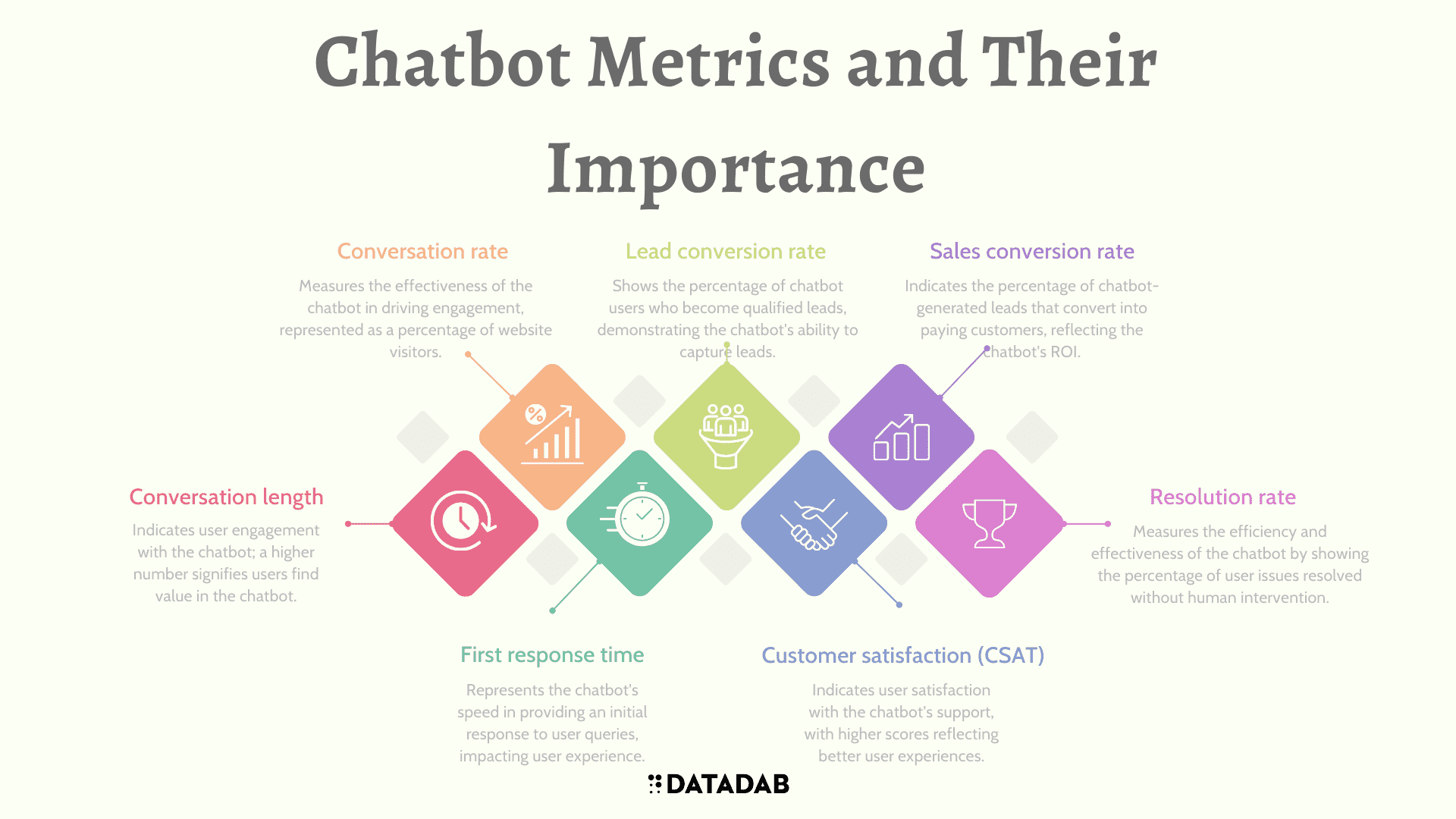
3. Key Chatbot Metrics to Track and Optimize
To make the most of your chatbot marketing efforts, it's essential to measure and optimize key metrics. Here are some important chatbot metrics you should be tracking:
3.1. User Engagement
- Conversation length: The average number of messages exchanged per conversation. A higher number indicates users are finding value in the chatbot and are more engaged.
- Conversation rate: The percentage of website visitors who engage with the chatbot. This metric helps gauge the overall effectiveness of your chatbot in driving engagement.
3.2. Conversion
- Lead conversion rate: The percentage of chatbot users who become qualified leads. A high conversion rate indicates that your chatbot is effectively capturing and qualifying leads.
- Sales conversion rate: The percentage of chatbot-generated leads that convert into paying customers. This metric helps measure the ROI of your chatbot marketing efforts.
3.3. Customer Support
- Resolution rate: The percentage of user issues resolved by the chatbot without human intervention. A higher resolution rate indicates a more efficient and effective chatbot.
- First response time: The time it takes for the chatbot to provide an initial response to a user query. Faster response times lead to better user experiences.
- Customer satisfaction score (CSAT): A measure of user satisfaction with the chatbot's support. High CSAT scores indicate that your chatbot is meeting or exceeding user expectations.
4. How to Leverage Chatbots for Engagement and Support
Here are some strategies to help you make the most of chatbots for engagement and support:
4.1. Optimize Chatbot Placement
Experiment with different chatbot placements on your website to find the most effective location. Some options include:
- Bottom-right corner
- Bottom-left corner
- Top-right corner
- Floating button
- Embedded within content
4.2. Use a Conversational Tone
Conversational AI should feel natural and friendly. Aim for a conversational tone that reflects your brand voice and makes users feel at ease.
4.3. Set Clear Expectations
Be transparent about your chatbot's capabilities and limitations. Setting clear expectations will prevent user frustration and help manage user interactions.
4.4. Provide a Human Escalation Option
Always offer users the option to escalate their issue to a human agent. This ensures that users who need more specialized assistance can get the help they need.
4.5. Integrate Chatbots into Your Marketing Strategy
Use chatbots to complement your existing marketing efforts, such as:
- Offering personalized product recommendations
- Collecting email addresses for newsletter subscriptions
- Assisting with content discovery and navigation
- Promoting events and webinars
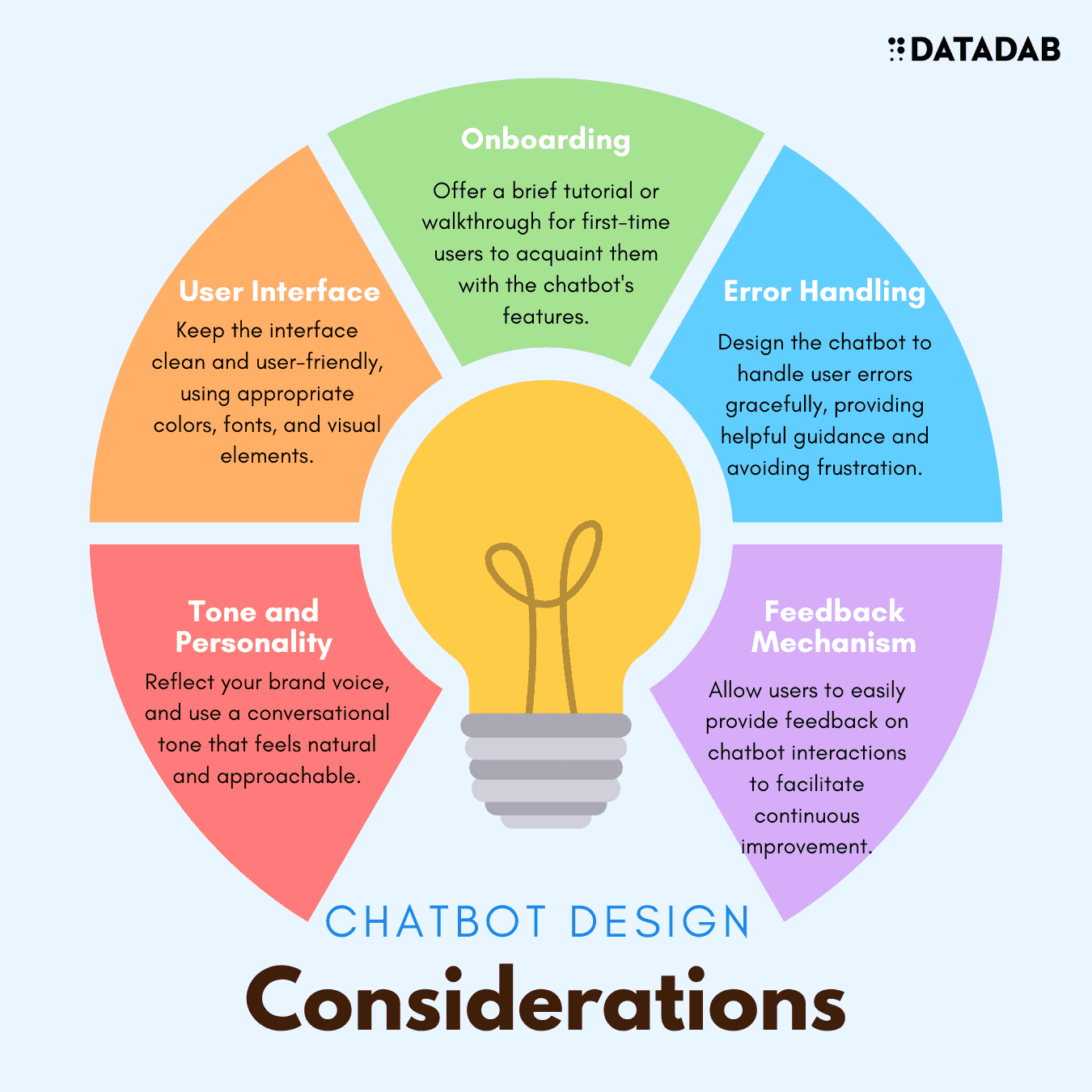
5. Building Your Chatbot: Tools and Best Practices
Now that you understand the potential of chatbots for your SaaS marketing strategy let's look at some popular chatbot-building tools and best practices:
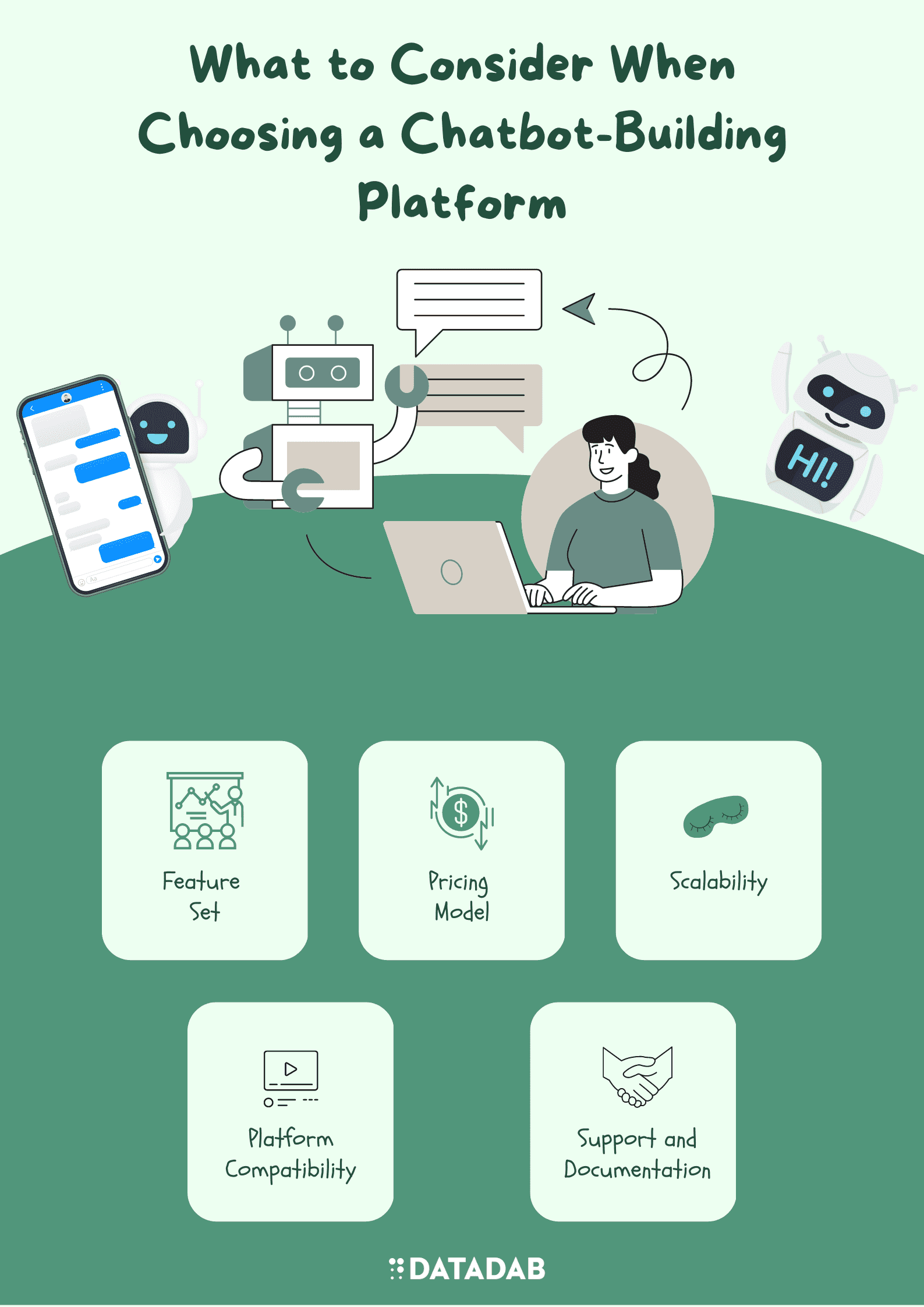
5.1. Chatbot-Building Tools
There are numerous chatbot-building platforms available, each offering unique features and capabilities. Some popular options include:
5.2. Chatbot Best Practices
Follow these best practices to ensure your chatbot is effective and delivers a positive user experience:
- Focus on a specific use case: Define the primary purpose of your chatbot, whether it's customer support, lead generation, or content discovery.
- Design for your target audience: Understand your target audience's needs, preferences, and pain points to create a chatbot that resonates with them and addresses their concerns effectively.
- Keep it simple: Start with a basic chatbot that addresses your primary use case and iterate on its functionality over time, based on user feedback and data.
- Test and optimize: Continuously test your chatbot's performance, gather user feedback, and make improvements to enhance its effectiveness and user experience.
- Integrate with your tech stack: Connect your chatbot to your CRM, marketing automation, and other relevant tools to streamline data collection and lead nurturing.
6. Conclusion
Chatbots have become an essential tool for SaaS marketers, providing a scalable, efficient, and personalized way to drive engagement and support. By integrating conversational AI into your marketing strategy, you can provide exceptional customer experiences, collect valuable insights, and, ultimately, grow your SaaS business.
To recap, here are the key takeaways from this guide:
- Chatbots powered by conversational AI offer numerous benefits for SaaS marketers, including 24/7 customer support, personalized experiences, and scalability.
- Monitor key chatbot metrics, such as user engagement, conversion rates, and customer satisfaction scores, to optimize your chatbot's performance.
- Leverage chatbots for engagement and support by optimizing placement, using a conversational tone, setting clear expectations, providing a human escalation option, and integrating chatbots into your marketing strategy.
- Choose a chatbot-building tool that aligns with your needs and follow best practices to ensure your chatbot is effective and delivers a positive user experience.
Now it's time to take the leap and start harnessing the power of chatbot marketing for your SaaS product. Happy chatting!
FAQ
Q1. Why are chatbots important for SaaS marketing?
A1. Chatbots are crucial for SaaS marketing for several reasons:
- 24/7 Customer Support: Chatbots provide instant responses to customer queries at any time, improving customer satisfaction and reducing support costs.
- Personalization: Chatbots can deliver personalized experiences to users based on their behavior, preferences, and history, enhancing engagement and driving conversions.
- Scalability: Chatbots can handle a large number of conversations simultaneously, enabling you to scale your customer support and engagement efforts without significant overhead costs.
- Lead Generation: Chatbots can help capture leads by engaging with website visitors, collecting contact information, and nurturing prospects through the sales funnel.
- Data Collection: Chatbots can gather valuable insights about users, helping you better understand your audience and make data-driven marketing decisions.
Q2. How can I ensure my chatbot is engaging and effective?
A2. To make your chatbot engaging and effective, consider the following tips:
- Design for your target audience: Understand your users' needs, preferences, and pain points, and tailor your chatbot's interactions accordingly.
- Maintain a conversational tone: Write your chatbot's responses in a natural, human-like manner to make conversations more enjoyable for users.
- Set clear expectations: Clearly communicate the chatbot's purpose and capabilities to users, so they know what to expect from the interaction.
- Provide a human escalation option: Allow users to connect with a human support agent if the chatbot cannot adequately address their concerns.
- Continuously optimize: Regularly test, gather user feedback, and analyze chatbot metrics to identify areas for improvement and enhance the user experience.
Q3. What key metrics should I track to measure my chatbot's performance?
A3. Some key chatbot metrics to track include:
- Conversation length: Measures user engagement with the chatbot.
- Conversation rate: Indicates the percentage of website visitors who interact with the chatbot.
- Lead conversion rate: Shows the percentage of chatbot users who become qualified leads.
- Sales conversion rate: Represents the percentage of chatbot-generated leads that convert into paying customers.
- Resolution rate: Measures the efficiency of the chatbot in resolving user issues without human intervention.
- First response time: Indicates the chatbot's speed in providing an initial response to user queries.
- Customer satisfaction (CSAT): Measures user satisfaction with the chatbot's support.
Q4. How do I choose the right chatbot-building platform for my SaaS product?
A4. To select the right chatbot-building platform, consider the following factors:
- Feature set: Assess the platform's features, such as AI capabilities, analytics, templates, and integrations, to ensure they align with your requirements.
- Pricing model: Compare the pricing options of various platforms to find one that fits within your budget and offers value for money.
- Scalability: Choose a platform that can accommodate your chatbot's growth in terms of features, users, and complexity.
- Platform compatibility: Ensure the platform is compatible with your existing tech stack, including CRM, marketing automation, and customer support tools.
- Support and documentation: Evaluate the platform's customer support and available resources, such as tutorials, guides, and community forums, to facilitate smooth implementation.
Q5. How can I effectively integrate chatbots into my SaaS marketing strategy?
A5. Here are some strategies for integrating chatbots into your SaaS marketing efforts:
- Optimize placement: Test different chatbot placements on your website to determine the optimal location for driving user engagement.
- Align with the customer journey: Identify opportunities to use chatbots at different stages of the customer journey, such as content discovery, lead nurturing, onboarding, and support.
- Create a content plan: Develop a content plan for your chatbot that includes a mix of promotional, educational, and interactive elements to keep users engaged and informed.
- Use data to personalize interactions: Leverage user data to personalize chatbot interactions and deliver more relevant, engaging experiences.
- Promote your chatbot: Increase awareness of your chatbot by promoting it through your marketing channels, such as email, social media, and blog posts.
Q6. How can I ensure my chatbot accurately understands user input?
A6. To improve your chatbot's ability to understand user input, consider the following:
- Leverage natural language processing (NLP): Utilize NLP techniques and AI models to better interpret and process user input in a human-like manner.
- Train your chatbot with diverse data: Expose your chatbot to a variety of phrases, questions, and statements to improve its understanding of user queries.
- Enable context-awareness: Incorporate context-awareness in your chatbot to understand the context of user input and provide more accurate responses.
- Handle errors gracefully: Design your chatbot to handle user errors or misunderstandings effectively, providing helpful guidance and avoiding frustration.
Q7. How can I measure the ROI of my chatbot marketing efforts?
A7. To measure the ROI of your chatbot marketing efforts, consider the following steps:
- Identify the key performance indicators (KPIs) that align with your marketing objectives, such as lead conversion rate, sales conversion rate, or customer satisfaction.
- Establish a baseline for these KPIs before implementing your chatbot.
- Track the performance of your chatbot by monitoring changes in your KPIs over time.
- Calculate the ROI by comparing the benefits (e.g., increased revenue, cost savings) of your chatbot to the investment made in its development and maintenance.
Q8. How can I make my chatbot more human-like and engaging?
A8. To make your chatbot more human-like and engaging, consider these strategies:
- Develop a chatbot persona: Create a unique chatbot persona that reflects your brand voice and resonates with your target audience.
- Use a conversational tone: Write your chatbot's responses in a natural, human-like manner to make conversations more enjoyable for users.
- Incorporate humor and empathy: Use humor and empathy in your chatbot's responses to create a more relatable and enjoyable user experience.
- Leverage AI and NLP: Utilize advanced AI and NLP techniques to enhance the chatbot's understanding of user input and provide more accurate, contextually relevant responses.
Q9. How can I ensure my chatbot stays up-to-date with the latest product information and industry trends?
A9. Keep your chatbot up-to-date by:
- Creating a content update schedule: Establish a regular schedule for updating your chatbot's content and knowledge base.
- Integrating with internal systems: Connect your chatbot to your internal systems, such as your CRM or product database, to access real-time information.
- Monitoring industry trends: Stay informed about industry trends, product updates, and customer feedback to ensure your chatbot remains relevant and accurate.
- Leveraging AI-powered learning: Implement AI-powered learning capabilities in your chatbot to continuously improve its knowledge and understanding based on user interactions.
Q10. How can I optimize my chatbot for lead generation?
A10. To optimize your chatbot for lead generation, consider these strategies:
- Create a targeted lead qualification process: Design your chatbot to ask relevant questions and gather essential information to qualify leads effectively.
- Segment users based on their behavior and preferences: Use the data collected by your chatbot to segment users and deliver personalized experiences tailored to their needs.
- Nurture leads through the sales funnel: Implement a chatbot-driven lead nurturing strategy that includes sharing helpful content, addressing pain points, and promoting your SaaS product's value proposition.
- Integrate with your marketing automation platform: Connect your chatbot to your marketing automation platform to streamline lead management and facilitate seamless hand-offs to your sales team.
- Test and optimize: Regularly test different chatbot strategies, such as messaging, user flows, and content, to identify the most effective approaches for lead generation.


